Kids Painting Projects How to Manage Mess
By Spramani Elaun
The biggest question I commonly get asked during classes or conferences by parents is “How do I manage a paint project with my small kids in my home”?
This is usually led by more similar comments:
• I’m scared of the mess paint makes, how do I manage this?
• How do I keep my kids off my furniture with paint?
• How do I teach my child how to paint when I don’t know how?
• How do I keep my kids from running away after I set-up a panting area or from getting bored easily?
• How do I keep my toddler from dumping paint everywhere?
OK, so before I give you advice on setting up your little painters art space, I would like to first share a passage from my most recent book why it’s important young children have painting experiences.
Book Excerpts:
To a young child, exploring through play is simply natural. Children collect knowledge and gain a sense of their physical world through their senses of seeing, smelling, tasting, touching, and hearing. The excitement a child experiences while dipping a brush in paint and creating strokes of color is a curious mixture of the senses! Visual art exploration is a natural way for children to explore and learn and it can come in many forms: doodling, painting, color, sculpting, crafting, and many other visual art forms. © 2016 Spramani Elaun
Why should visual arts be part of a young child’s life?
Making art is a natural way to communicate. Emotions can be expressed during the process of making art or the final message in artwork. From a beginning idea to a completed art project, the process is good for a child to experience. Visual Arts is a great way to explore a child’s creativity. Our physical earth and daily life is a bounty of colorus and light, art is a great way to explore colour. Art making provides limitless colour and form. Making art is a great way a child can develop fine motor skills. Visual Arts can bridge a child to the natural world. Visual Arts in a young child’s life can be positive for healthy growth.
Spramani Elaun, 20014, All rights reserved, Nurturing Children In The Visual Arts Naturally©
In my book I go into depth on these topics, but for a quick explanation I would like to answer these questions to help parents manage paint messes.
Like most activities such as learning to ride a bike, tie a shoe lace or potty train, this takes time, preparation and parental understanding how young children progress slowly over time when learning.
I’ve spent thousands of hours observing and working closely painting with young children for the very first time and have this advice to offer.
Yes, your child will for sure will get paint all over your home if you don’t start off with guides in place.
Yes, you can keep paint off your furniture by setting the right environment up for painting.
Yes, you can create time segments that are fun and interesting that won’t have children get bored.
Finally, all children love dumping paint to see what happens next and on occasion some will even eat paint!
How do I manage painting with my small kids in my home”?
Young children love to play with paint. At these ages painting is more of an exploratory experience and not so much about what pictures to paint. I’ve spoken about the process of art making and its importance for many years. It’s very important for you as a teacher, parent or caregiver to truly understand children are simply exploring and not planning out paintings like an artist.
Choose ahead of time a place where only painting activities can take place. Your child will get accustom to following these guides you set in place.
When you decide to bring out paints for young children remember they have no experience understanding how far paint splashes or that paint can stain clothes or furniture.
Start out with friendly paints like finger paint or watercolor that’s washable and easy to clean-up.
Only offer painting in a place you’re willing to accept splashing; play tables with no carpets underneath or with old carpets that can get stained and soiled, outside patio or garden table area that can easily be rinsed off, or a kitchen table. For teachers and caregivers work where messes are easy to clean-up and water is near with larger groups of kids.
Young children don’t need to learn painting skills at these ages. The simplest things I recommend teaching is;
• How to dip a paint brush
• Make brush strokes
• How a palette is where paint goes
• How to apply paint to surfaces.
It’s also important to let children know what surfaces are Not OK to paint.
You can bring all these experiences to your child without knowing how to paint yourself. You will find very specific advice in my books how teaching a young child how to paint like an adult is not healthy.
How do I keep my kids from running away after I set-up a panting area or from getting bored easily?
Young kids don’t have the attention span like a middle age kids or adults to sit for long periods of time. The most a toddler will be engaged in painting is 20 minutes. I have seen some kids spend more time painting, however on average expect children to last in small segments of 20 to 40 minutes.
Be sure you stay close and engaged in painting with your child. Children love to mimic their parents and will do what you are doing, like painting. If you set-up your child to paint and walk away, chances are they will go looking for you and not finish painting, or even follow you with a loaded paint brush. When you want your children to paint be sure you allow yourself plenty of time to paint and be engaged. It’s after kids get order around the ages of six or seven they have the attention span to sit by themselves and enjoy painting alone.
Painting is a very curious activity for little children and active learning. Be sure your prepared for children to spill and pour paints on surrounding surfaces while exploring paint. Be prepared to accept this kind of reactions from small kids, like dumping bowls of liquid paint. It takes years for young kids to actually learn to manage paint and develop fine motor skills.
If you would like to learn and understand how children learn to paint, read my book Nurturing Children In the Visual Arts© the most up-to-date method book how children learn to paint and draw.
Read what one mom posted on our Facebook after her first experience with her young child and using our paint products!
Mom Angela Van Nostrand “We just received the (Nature of Art For Kids®) Little Painter’s Kit today and I didn’t have any rules set out. I laid an old towel on the table and put my 2-year-old in her highchair and an old t-shirt of Daddy’s and handed her the brushes. We turned on a CD and just watched her and occasionally joined in with her. She watched me pour a bit of paint into the palette and she was off…painting her wooden butterfly with such interest and intensity that it was amazing to watch. I feel there is a natural interest in color and making beauty, so I didn’t have a problem keeping her focused. In fact, after an hour I had to gently convince her it was time to do something else and we’d paint again later. You can’t be afraid of the mess. A bit of mess will happen, if you can accept it, it will be a very fun experience for both you and your child(ren)”.
Check out my Kids Painting Book:
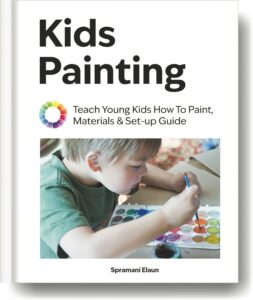
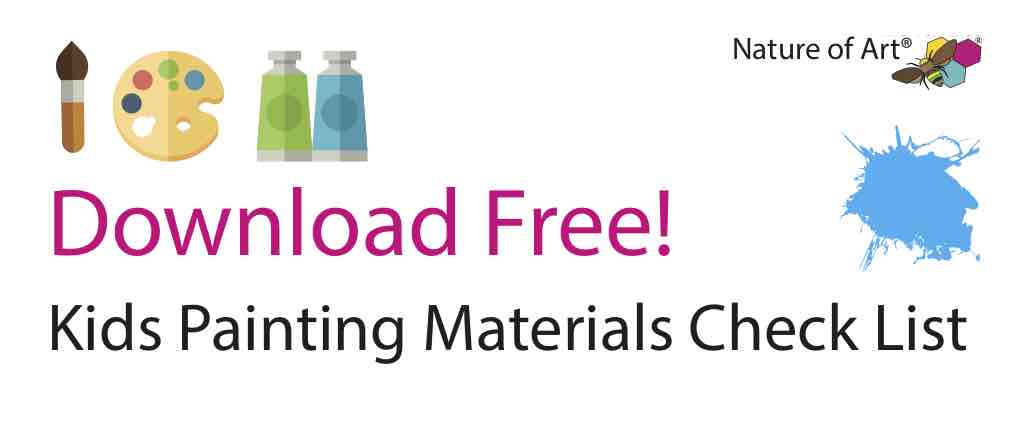
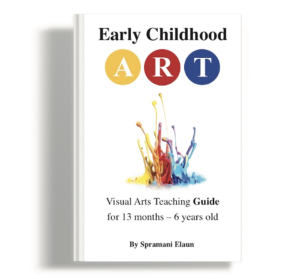
All rights reserved © 2025, Nature of Art®

No part of this blog may be used or be reproduced in any manner whatsoever including reproducing, publishing, performing, and making any adaptions of the work – including translation into another foreign language without written permission except in the case of brief quotations embodied in critical articles and reviews. Nature of Art® Publishing P.O. Box 443 Solana Beach, California 92075.


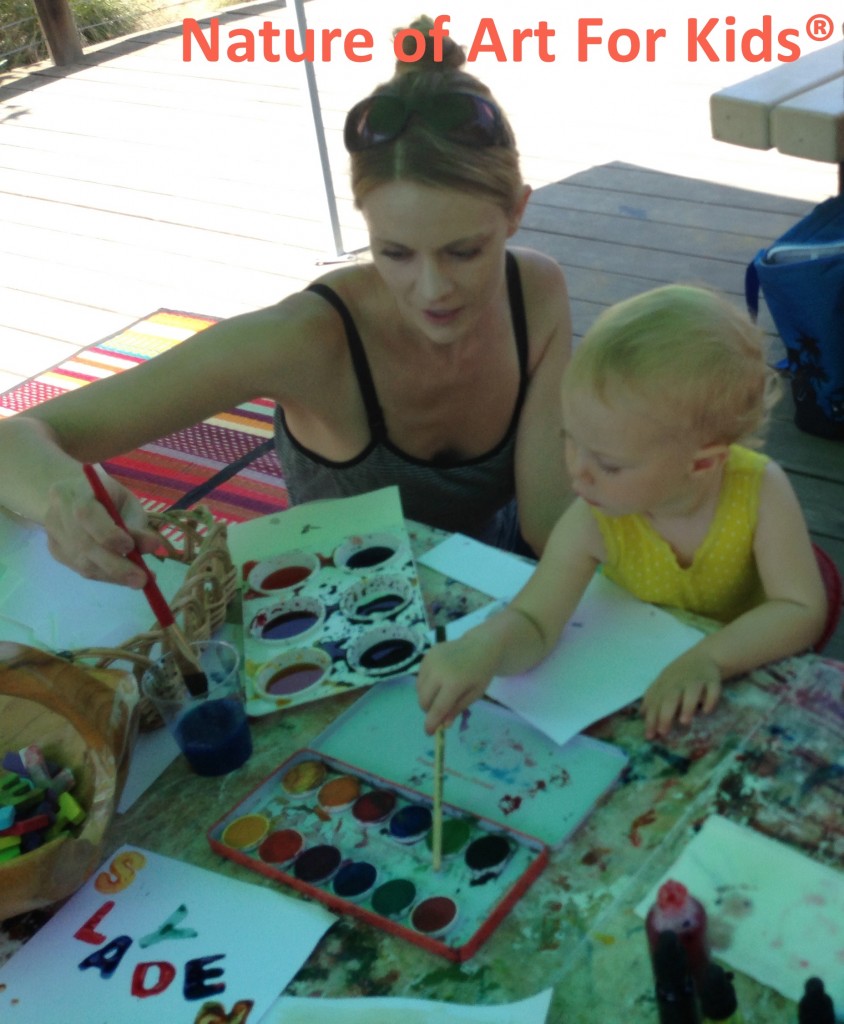
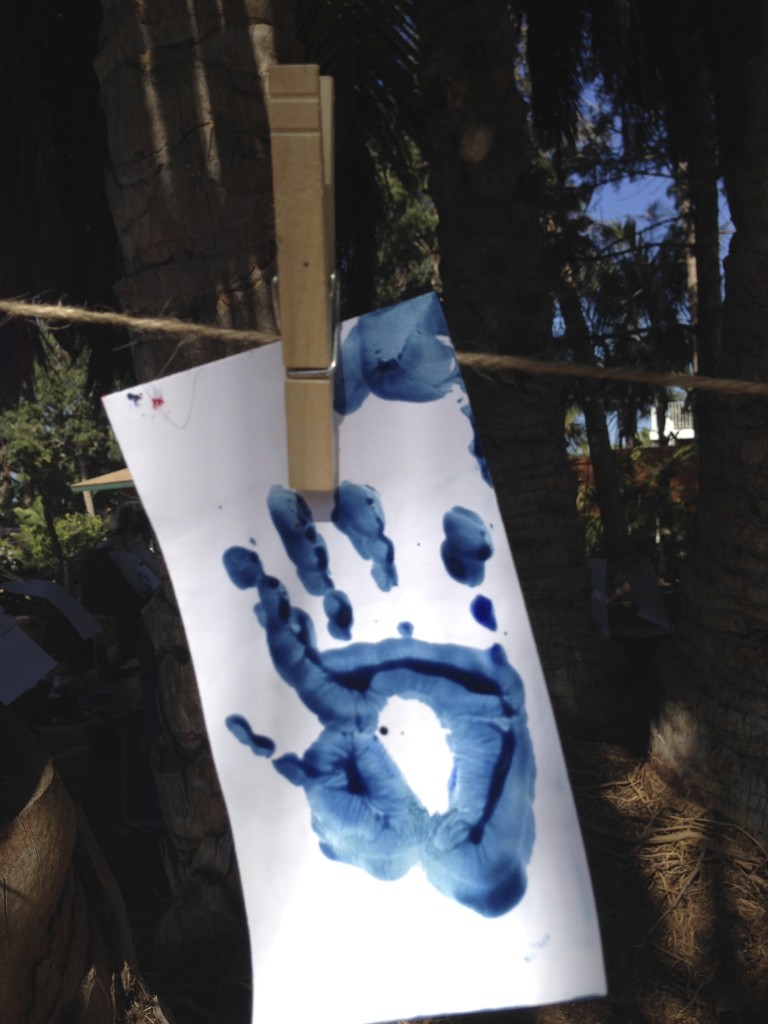
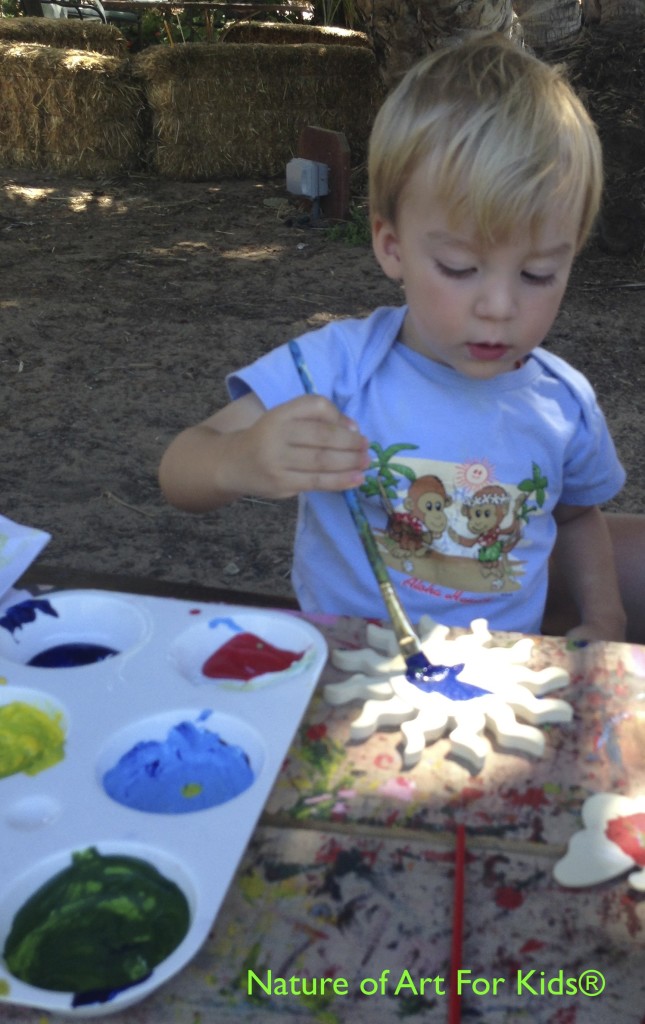
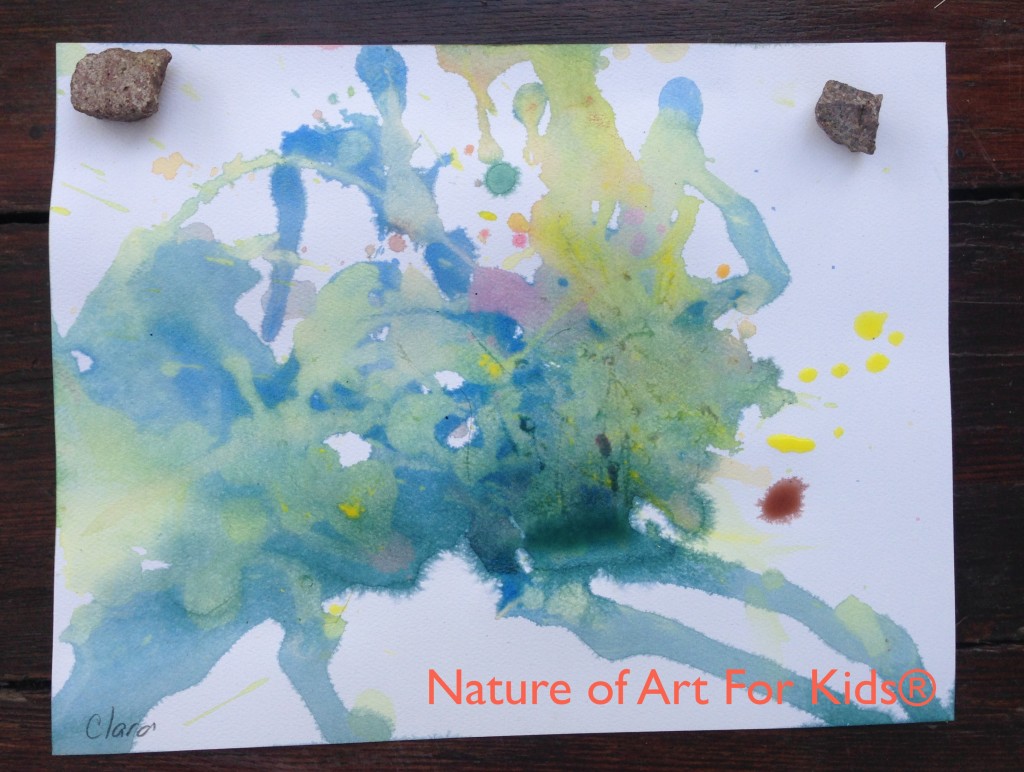

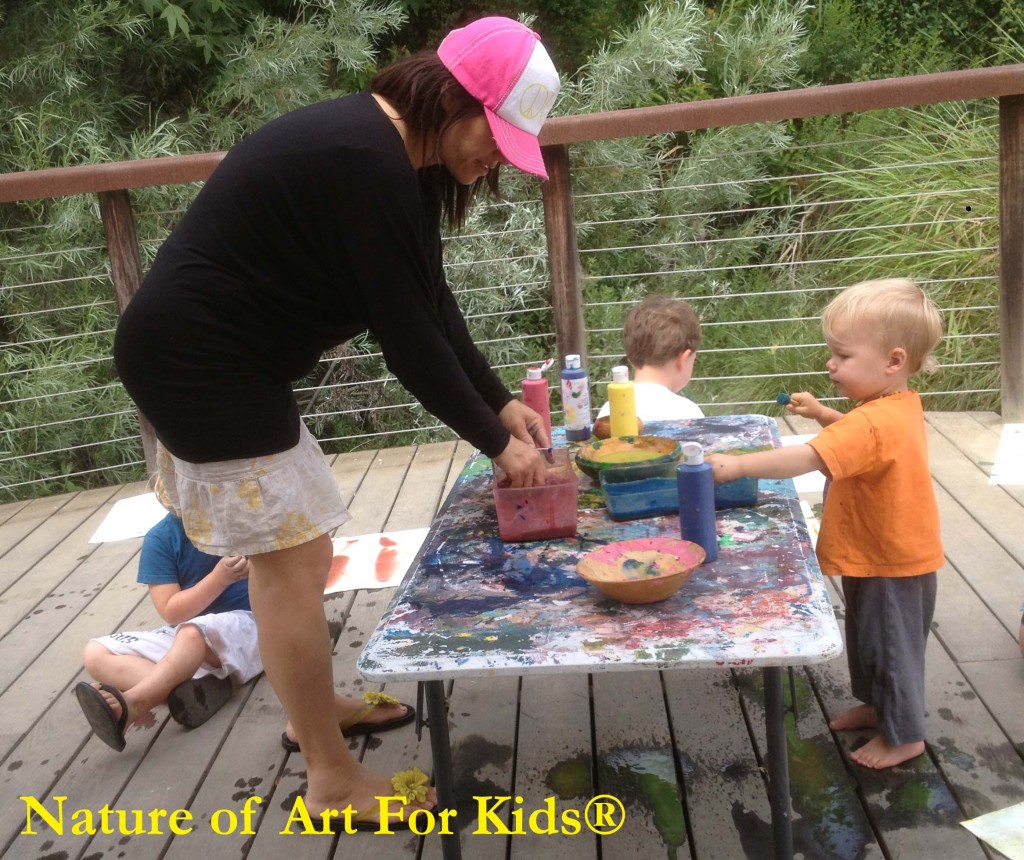
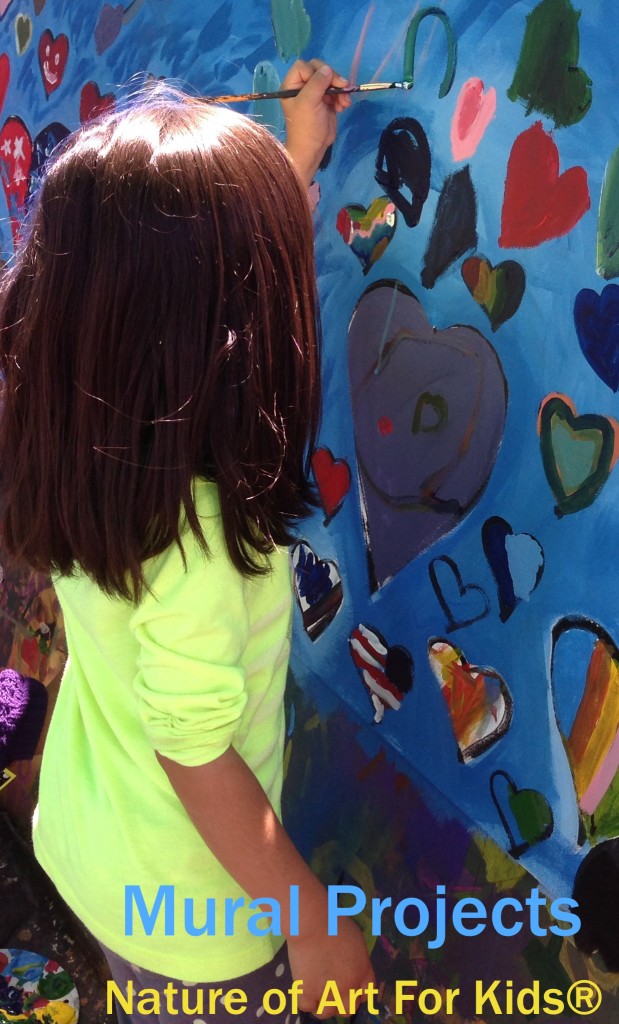




Pingback: Mixing primary colors for kids, beginning lessons, Art teacher Spramani Elaun - EcoKidsArt.com()
Pingback: Painting with foam alphabet letters & finger paint with kids of all ages by Spramani Elaun - EcoKidsArt.com()
Pingback: I love potato stamping with kids! - EcoKidsArt.com()
Pingback: February Art Favorite Wrap-up! - EcoKidsArt.com()
Pingback: Kids Mixing Primary Colors into secondary colors()
Pingback: Kids Art Lessons | Natural Teacher Favorite February Wrap-up | Nurturing Children In The Visual Arts Naturally - Books Author()
Pingback: Mixing Primary Colors into Secondary, Beginning Kids Paint()
Pingback: Kids|Monotype Lithograph |printmaking |acrylic paint | EcoKidsArt.com Official Website For – Nature of Art For Kids® School & Art Store()